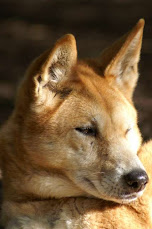
(Lama glama)
Location: Andes Mountain range of South America in Peru, Chile, Bolivia and Ecuador
Habitat: grasslands, mountainous areas and deserts
Llamas and other members of the Camelid family were originally found on the central plains of North America, about 40 million years ago. Three million years ago llama-like animals moved into South America. By the end of the last ice age (10,000 – 12,000 years ago) camelids were extict in North America. Domesticated llamas were derived from guanacos in the Andean highlands of Peru 4,000-5,000 years ago. Llamas and other members of the camel family, such as alpacas, guanacos and vicunas, are now native to the south American Andes in Peru, Chile, Bolivia and Ecuador.
The average height of a llama is 45” at the shoulder and 5-6’ at the head. They weigh between 250 and 500 pounds. They have a face very similar to a common cammel. Their fur is very lightweight and oil free and is used to make sweaters, blankets, hats etc. The wool comes in many colors ranging from white to black with shades of gray, beige, brown and red. It can be solid, spotted or mared in an array of patterns.
Llamas are modified ruminants with a three-compartment stomach. They chew their cud like cattle and sheep. They have a highly effective digestive system therefore have a very low protein requirement. They eat stricly plant material. Camelids have s split upper lip which helps them sift though grass or hay when they are eating. Llamas have front teeth only on the lower jaw and a toothless uper jaw, like a gum. This helps them break off the grass at the ground level, leaving the roots for future growth. They can feed on pasture as well as hay and often times are supplemented with grain.
Llamas are strong, sturdy, hardy pack anamals. Since they originated in the Andes mountain range they can withstand extreme temperatures. They can carry about 25% to 30% of its body weight, making them as strong as a horse. Like all camelids, their feet have a cushiony leathery pad instead of a hard hoof, resulting in very low environmental impact on trails compared to horses and mules.
They are social animals that like the company of other llamas. They are gentle, curious and independent yet shy. Their intelligence and calm nature make them good work animals as well as good family pets. They serve other purposes such as being used in animal facilitative therapy, because of their calming effects. They are popular in 4-H, Scouts and other youth groups.
They communicate with each other by using a series of ear, body and tail postures. They also have a shrill alarm call and humming sounds. Llamas will usually spit at other llamas in order to divert annoying suitors, ward off a perceived threat, or most commonly, to establish pecking order at mealtime. If raised properly, within a pack, they will have no desire or need to spit at people. If they are bottle fed or raised in a petting zoo setting and are not properly socialized they may spit at a person, just because they do not know any better.



